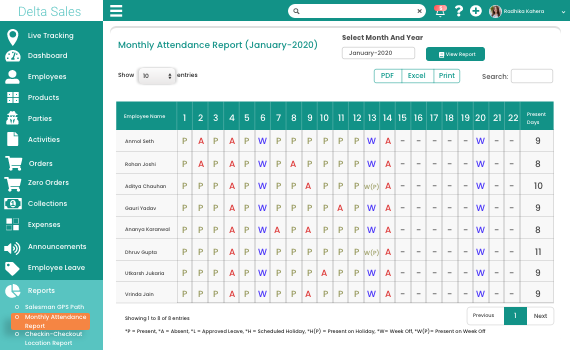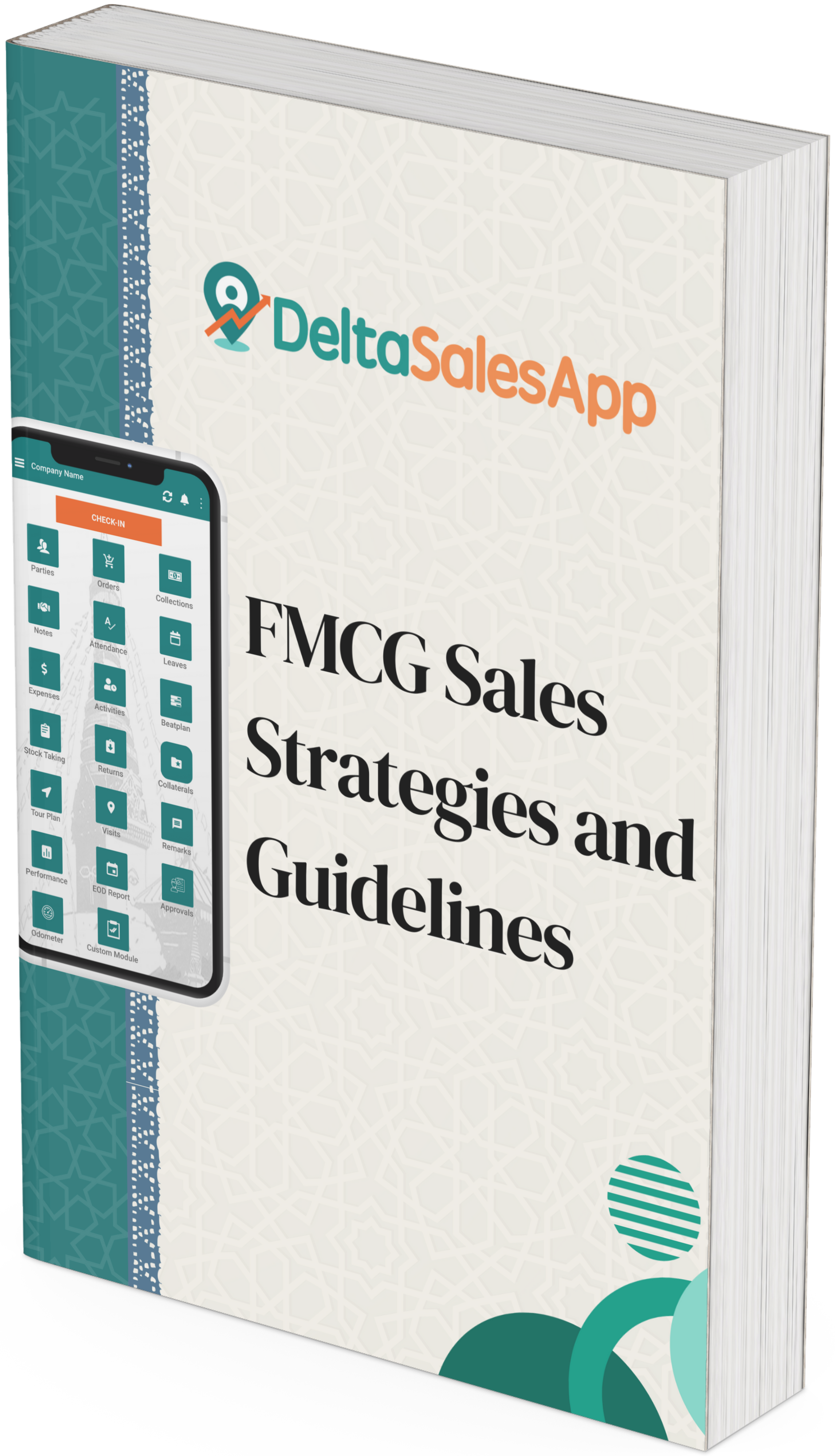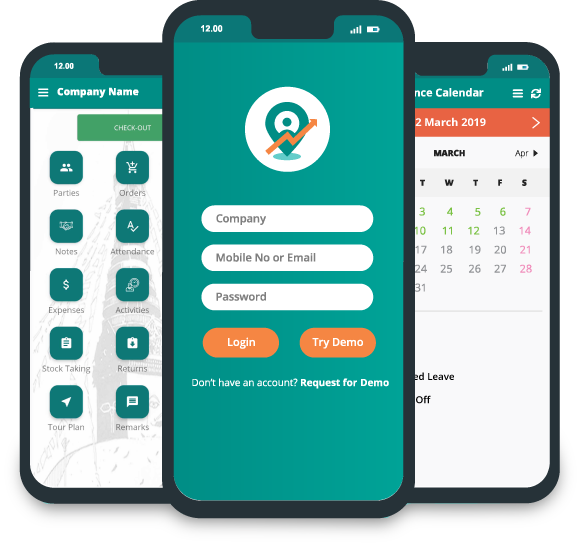Why Every Growing Business Needs a Sales Representative Tracking App

Growth is the ultimate goal of every business. But as companies expand, so do the challenges of managing their sales teams. From monitoring field activities to ensuring accountability and keeping customer satisfaction high, managing sales representatives manually is no longer enough.
This is where a sales force tracking app comes into play. Designed to provide real-time visibility into field sales activities, it empowers businesses to manage their sales workforce more effectively, improve performance, and scale operations without unnecessary friction.
Whether you run an FMCG distribution network, a pharmaceutical company, or a retail supply chain, adopting a sales representative tracking app is no longer optional, it’s a necessity for sustainable growth.
What is a Sales Representative Tracking App?
A sales‑rep tracking app is a mobile or cloud‑hosted tool that lets companies follow, oversee, and fine-tune the daily tasks of field salespeople. Rather than depending on manual check‑ins, paper reports, or constant phone calls, managers gain full real‑time insight into their sales force.
These apps aim to streamline sales administration, boost accountability, and ultimately increase revenue by keeping sales teams performing at their best.
Key functions of a sales representative tracking app include:
GPS Location Tracking – See where your sales reps are in real-time, verify client visits, and optimize route planning to save time and travel costs.
Attendance and Visit Logging – Know when and where sales reps start and finish their day. Track their customer visits, time spent at each location, and ensure that schedules are being followed.

Order and Payment Tracking – Record orders on the go, manage collections, and ensure accurate transaction records. This feature helps reduce errors and speeds up the order-to-cash cycle.
Automated Reporting – Replace spreadsheets and manual reports with instant updates. Sales reps can log their daily activities directly in the app, while managers get real-time dashboards and performance analytics.
Although a sales‑force tracking app and a sales‑rep tracking app are frequently used interchangeably, the primary distinction is their scope: the former generally handles broader, team‑level oversight, while the latter concentrates on monitoring individual representatives. Together, they form an integrated system that enhances sales visibility and productivity.
Why Businesses Outgrow Manual Sales Management
When businesses are small, it’s possible to track sales reps through daily calls, manual reporting, and in-person check-ins. But as the team grows, this system quickly collapses.
Key limitations of manual sales management include:
Lack of real-time data about field activities.
Time wasted in creating and verifying manual reports.
Difficulty in analyzing performance trends.
Inability to optimize travel routes or schedules.
Increased chances of miscommunication or missed opportunities.
A mobile sales tracking app eliminates these inefficiencies, ensuring that growing businesses maintain control and insight without overburdening managers.
Benefits of Sales Representative Tracking Apps for Growing Companies
Adopting a sales force tracking app brings numerous advantages. Here’s how it transforms business operations:
1. Accurate Sales Rep Monitoring
A sales‑person tracking app lets managers see exactly where their reps are, which customers they’re meeting, and how long each activity takes. This curtails inaccurate reporting and enhances transparency throughout the sales team.
2. Real-Time Sales Force Tracking
With GPS‑powered tools, firms can follow their sales team in real time. This not only boosts accountability but also lets managers react swiftly to pressing customer requests, assign new duties on the fly, and make better use of time.
3. Automated Reporting & Data Insights
Manual reporting is prone to errors and delays. A sales force tracking app automates reposting and analytics this process, generating instant reports on sales activities, orders, collections, and more. With actionable analytics, managers can make smarter decisions that drive growth.
4. Enhanced Productivity & Accountability
By cutting out manual paperwork and delivering clear performance metrics, sales reps can concentrate on selling instead of reporting. Meanwhile, managers can monitor performance through data‑driven insights, ensuring everyone remains accountable for results.
Sales Force Tracking App vs Traditional CRM Tools
Customer Relationship Management (CRM) tools have been a game-changer for businesses when it comes to managing leads, nurturing customer relationships, and keeping track of communication history. However, when it comes to managing sales representatives in the field, traditional CRMs fall short.
A sales force tracking app bridges this gap by offering real-time visibility into what sales reps are doing outside the office. It complements CRM systems by focusing not only on what customers are doing but also on what sales reps are doing.
Here’s a closer look at the difference:
CRM Tools
Designed primarily for pipeline management, customer databases, and engagement tracking.
Helps sales teams manage leads, prospects, and ongoing deals.
Stores communication history like calls, emails, and meetings.
Provides insights into customer behavior and buying journey.
Sales Representative Tracking Apps
Focuses on field operations and on-ground sales force performance.
Provides GPS-based tracking of reps’ locations and movements.
Manages attendance, work hours, and visit schedules seamlessly.
Offers route planning for better time management and reduced travel costs.
Automates daily reports, ensuring accuracy and saving time.
Tracks orders, payments, and collections directly from the field.
Generates productivity insights to help managers measure performance.
Industries That Need Sales Representative Tracking Apps
Although every sales-driven business can benefit, some industries need these solutions more urgently:
FMCG & Distribution – Track van sales, route efficiency, and retailer visits.
Pharmaceuticals & Healthcare – Monitor medical reps’ visits to doctors and hospitals.
Retail & Consumer Goods – Ensure shelf audits and order fulfillment.
Telecom & Services – Manage large teams spread across multiple regions.
Manufacturing & Wholesale – Improve dealer/distributor management and order tracking.
In all these cases, a sales force tracking app ensures that managers get real-time insights and reps stay on target.
Common Misconceptions About Sales Tracking Solutions
Even with obvious benefits, many companies still balk at implementing a sales‑rep tracking app due to several prevailing myths. A frequent misconception is that these platforms are merely tools for spying on staff. In truth, a sales‑force tracking solution isn’t about micromanagement; it’s intended to enable reps and boost overall performance. By exposing routes, visits, and productivity metrics, the apps eliminate guesswork and give managers a factual basis for decisions that help both the organization and its people. The aim is to foster a culture of responsibility and efficiency, not mistrust.
Another false notion is that sales‑tracking systems are overly complex or only fit for large corporations. Today’s apps are built to be intuitive, mobile‑first, and seamlessly fit into everyday workflows, often requiring only a brief onboarding period. Rather than being exclusive to big enterprises, these tools deliver significant advantages to small and midsize firms, granting them the same transparency and control enjoyed by larger rivals. In fact, deploying a sales‑rep tracking application early can provide emerging businesses with a competitive advantage, allowing them to scale more quickly through streamlined processes and heightened field productivity.
Top Features in Modern Sales Force Tracking Apps
When selecting a sales force tracking app, businesses should look for these must-have features that ensure maximum productivity and efficiency:
GPS-based Real-Time Tracking – Monitor sales reps’ live locations, optimize travel routes, and ensure timely client visits.
Attendance & Leave Management – Digitally record check-ins, check-outs, and leaves to maintain accurate work records.
Expense Reporting – Allow reps to log travel, food, or client-meeting expenses on the go for faster reimbursement.
Customer Visit Scheduling – Plan and assign visits in advance, ensuring better time management and improved customer satisfaction.
Order and Inventory Tracking – Enable sales reps to capture orders instantly and track inventory levels to avoid stockouts or delays.
Performance Dashboards & Analytics – Get real-time insights into targets, sales activities, and productivity trends for data-driven decisions.
Integration with CRM/ERP Systems– Connect field sales data with existing systems for a unified, streamlined workflow across departments.
The right combination of these features ensures smoother sales operations, better visibility, and maximum ROI for growing businesses.
Conclusion
In today’s cut‑throat business landscape, growth depends on visibility, speed, and efficiency. A sales‑rep tracking application ensures companies stay aware of their most valuable asset. By delivering real‑time insights, automating daily reports, and enhancing accountability, these apps equip businesses with the tools to make quicker, smarter decisions that drive growth.
Whether you work in FMCG, pharma, retail, or wholesale, a sales‑force tracking app is no longer a luxury, it’s a strategic necessity. Such technology lets businesses expand their operations, deepen customer connections, and stay ahead of rivals. Solutions like Delta Sales App are designed specifically for growing companies, providing an all‑in‑one platform to monitor field work, simplify reporting, and boost team efficiency. For firms committed to lasting success, adopting sales‑tracking tools now is the smart step toward a stronger future.









